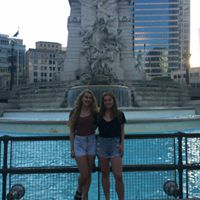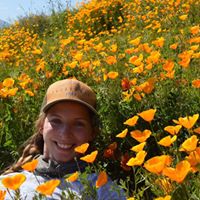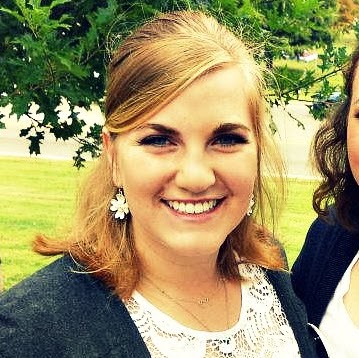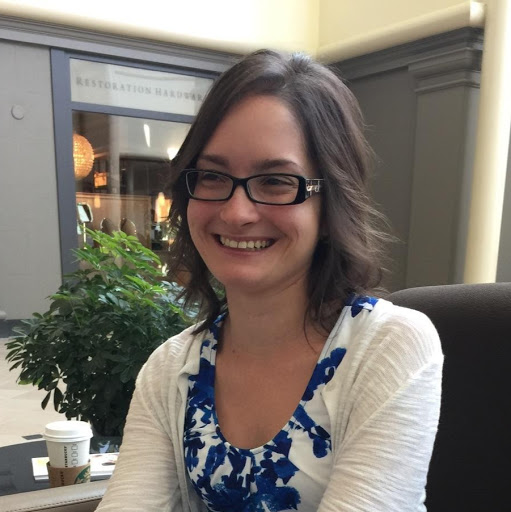Sarah Jane Mcgowan
age ~49
from Tracy, CA
- Also known as:
-
- Sarah J Carlson
- Sarah Jane Carlson
- Sarah H Carlson
Sarah Mcgowan Phones & Addresses
- Tracy, CA
- Castro Valley, CA
- Livermore, CA
- Santa Clara, CA
- Dublin, CA
- Stockton, CA
Resumes

Sarah Mcgowan
view sourceWork:
United States

Sarah Mcgowan
view sourceSkills:
Microsoft Office
Microsoft Word
Microsoft Excel
English
Customer Service
Windows
Microsoft Word
Microsoft Excel
English
Customer Service
Windows

Sarah M Stone Tom Mcgowan
view source
Sarah Mcgowan
view source
Sarah Mcgowan
view source
Senior Credit And Collections Analyst
view sourceWork:
Chase Corporation
Senior Credit and Collections Analyst
Senior Credit and Collections Analyst

Sarah Mcgowan
view source
Sarah Mcgowan
view sourceUs Patents
-
Reduce Line End Pull Back By Exposing And Etching Space After Mask One Trim And Etch
view source -
US Patent:7015148, Mar 21, 2006
-
Filed:May 25, 2004
-
Appl. No.:10/852883
-
Inventors:Todd P. Lukanc - San Jose CA, US
Luigi Capodieci - Santa Cruz CA, US
Christopher A. Spence - Sunnyvale CA, US
Joerg Reiss - Sunnyvale CA, US
Sarah N. McGowan - San Francisco CA, US -
Assignee:Advanced Micro Devices, Inc. - Sunnyvale CA
-
International Classification:H01L 21/302
H01L 21/461 -
US Classification:438736, 438720
-
Abstract:The invention is a method of manufacturing a semiconductor device and such semiconductor device. The semiconductor device includes an integrated circuit pattern including a horizontal line, a vertical line and a space therebetween, the space including a precise width dimension. The method includes the steps of: forming a photosensitive layer to be patterned, patterning the photosensitive layer to form a pattern including a master horizontal line and a master vertical line without a space therebetween, transferring the pattern to at least one underlying layer using the patterned photosensitive layer, forming a second photosensitive layer over the patterned at least one underlying layer, patterning the second photosensitive layer to form a second pattern including a master space aligned to dissect a horizontal line and a vertical line formed in the at least one underlying layer, and transferring the second pattern to the at least one underlying layer to form a third pattern including a horizontal line and a vertical line with a space therebetween, the space including a precise width dimension.
-
Device And Method For Determining An Illumination Intensity Profile Of An Illuminator For A Lithography System
view source -
US Patent:7027130, Apr 11, 2006
-
Filed:Apr 28, 2004
-
Appl. No.:10/833651
-
Inventors:Christopher A. Spence - Sunnyvale CA, US
Todd P. Lukanc - San Jose CA, US
Luigi Capodieci - Santa Cruz CA, US
Joerg Reiss - Sunnyvale CA, US
Sarah N. McGowan - San Francisco CA, US -
Assignee:Advanced Micro Devices, Inc. - Sunnyvale CA
-
International Classification:G03B 27/72
-
US Classification:355 69
-
Abstract:A system and method for generating an illumination intensity profile of an illuminator that forms part of a projection lithography system. Radiation from the illuminator is projected towards an illumination profile mask having a plurality of apertures such that each aperture passes a distinct portion of the radiation. The intensity of each of the distinct portions of radiation is detected and assembled to form the illumination intensity profile.
-
Predefined Critical Spaces In Ic Patterning To Reduce Line End Pull Back
view source -
US Patent:7071085, Jul 4, 2006
-
Filed:May 25, 2004
-
Appl. No.:10/852876
-
Inventors:Todd P. Lukanc - San Jose CA, US
Luigi Capodieci - Santa Cruz CA, US
Christopher A. Spence - Sunnyvale CA, US
Joerg Reiss - Sunnyvale CA, US
Sarah N. McGowan - San Francisco CA, US -
Assignee:Advanced Micro Devices, Inc. - Sunnyvale CA
-
International Classification:H01L 21/475
-
US Classification:438585, 438671, 438736, 438739, 438947
-
Abstract:The invention includes an apparatus and a method of manufacturing such apparatus including the steps of: forming a layer to be patterned, forming a photosensitive layer over the layer to be patterned, patterning the photosensitive layer to form a pattern including a horizontal line and a vertical line without a space therebetween, transferring the pattern to the layer to be patterned, forming a second photosensitive layer over the pattern, patterning the second photosensitive layer to form a second pattern including a space aligned between the horizontal line and the vertical line, and transferring the second pattern to the layer to be patterned to form a third pattern including a horizontal line and a vertical line with a space therebetween, the space including a width dimension achievable at a resolution limit of lithography.
-
Method Of Lithographic Image Alignment For Use With A Dual Mask Exposure Technique
view source -
US Patent:7108946, Sep 19, 2006
-
Filed:Jan 12, 2004
-
Appl. No.:10/755664
-
Inventors:Todd P. Lukanc - San Jose CA, US
Sarah N. McGowan - San Francisco CA, US
Bhanwar Singh - Morgan Hill CA, US
Joerg Reiss - Sunnyvale CA, US -
Assignee:Advanced Micro Devices, Inc. - Sunnyvale CA
-
International Classification:G03F 9/00
G03C 5/00 -
US Classification:430 22, 430 30, 430312
-
Abstract:Methods of fabricating an integrated circuit on a wafer using dual mask exposure lithography is disclosed. Improved mask image alignment between a first mask image and a second mask image of a dual mask exposure technique can be achieved by aligning the second mask image to a latent image created by an exposure using the first mask image.
-
Microdevice Having Non-Linear Structural Component And Method Of Fabrication
view source -
US Patent:6995433, Feb 7, 2006
-
Filed:Mar 2, 2004
-
Appl. No.:10/791250
-
Inventors:Todd P. Lukanc - San Jose CA, US
Sarah N. McGowan - San Francisco CA, US
Luigi Capodieci - Santa Cruz CA, US
Bhanwar Singh - Morgan Hill CA, US
Joerg Reiss - Sunnyvale CA, US -
Assignee:Advanced Micro Devices, Inc. - Sunnyvale CA
-
International Classification:H01L 29/94
H01L 31/062 -
US Classification:257366, 257401
-
Abstract:A microdevice for forming a part of an integrated circuit and method for fabricating are disclosed. The microdevice can include a first conductive region and a second conductive region having a channel region interposed therebetween. The mircodevice has a channel region controlling component disposed over the channel region and separated therefrom by at least one dielectric layer. The channel region controlling component has a non-linear structural characteristic derived from a non-linear structural characteristic of a photo resist feature used as an etch mask for the channel region controlling component.
-
Optimized Optical Proximity Correction Handling For Lithographic Fills
view source -
US Patent:20140223392, Aug 7, 2014
-
Filed:Feb 5, 2013
-
Appl. No.:13/759297
-
Inventors:- Grand Cayman, KY
Sarah McGowan - San Francisco CA, US -
Assignee:GLOBALFOUNDRIES INC. - Grand Cayman
-
International Classification:G03F 1/00
-
US Classification:716 53
-
Abstract:An approach for providing a fragmentation scheme for lithographic fills is provided. In a typical embodiment, a plurality of shapes in a lithographic (e.g., dummy) fill will be grouped/classified into a first set of shapes (e.g., a representative set of shapes) and a second set of shapes (e.g., a similar set of shapes). A set of points will be identified along the edges of the first set of shapes (e.g., at corners of the edges and at positions along the edges that are in alignment with corners of adjacent shapes) to yield an initial mask output. This initial mask output will be copied to the second set of shapes to yield a final mask output which may then be outputted using such an optimized fragmentation scheme.
Classmates

Sarah McGowan
view sourceSchools:
Alianza Elementary School Watsonville CA 1983-1985
Community:
Ian Snoeberger, Charles Moran

Sarah McGowan (McFarland)
view sourceSchools:
Pinkston Middle School Mountain Home AR 1993-1997
Community:
Pamela Holt

Sarah McGowan
view sourceSchools:
Area D Alternative High School Los Angeles CA 1975-1979
Community:
Ariel Robbins

Sarah McGowan
view sourceSchools:
Bishop Kenny High School Jacksonville FL 1997-2001
Community:
Mary Gonzalez, Nikki Hatch, Woodrow David, Scott Mccorkle

Sarah McGowan
view sourceSchools:
River Plaza Elementary School Red Bank NJ 1975-1982, Thompson Middle School Middletown NJ 1982-1985
Community:
Christy Interdonati, Glenn Rodland, John Driscoll, Jon Fisher, Carol Laster, Tracee Coleman, Robin Hermida, Karen Oesterle, Robin Mason

Sarah McGowan
view sourceSchools:
St. Gabriel School Bronx NY 1983-1991
Community:
Maria Malagiero, Kathryn Sans, Lauren Parlato, Vincent Nee, Jen Goldman, Kate Smith, Meg Cabot, Andrew Mccarthy, Nicole Mazza, Carin Young, Beth Cristiano

Sarah McGowan
view sourceSchools:
Perrydale School Amity OR 2002-2006
Community:
Cassidy Terhune, Jennifer Helvie, Elizabeth Tippens, Jamie Witham, Ronald Vincent, Jesi Young

Sarah McGowan (Santana)
view sourceSchools:
bellport senior high shcool Bellport NY 1988-1992
Community:
Leanthony Hobson, Riyaz Shera, Rafael Laverde, Julio Diaz, Dawn Thompson, Casie Lin, Phoebe Gonzalez, Kenneth Maldonado, K H, Chris Musso

Angel Sarah Mcgowan
view source
Sarah McGowan Irish Danci...
view source
Sarah Annalea McGowan
view source
Sarah McGowan
view source
Sarah Jean McGowan
view source
Sarah Mcgowan
view source
Sarah Mcgowan
view source
Sarah Marie McGowan
view sourceMyspace

Sarah McGowan
view sourceLocality:
That Place Between The Soo & Sudz, Ontario
Gender:
Female
Birthday:
1948
Youtube
Googleplus

Sarah Mcgowan
Education:
Mississippi State University - Biological Engineering

Sarah Mcgowan

Sarah Mcgowan

Sarah Mcgowan

Sarah Mcgowan

Sarah Mcgowan

Sarah Mcgowan

Sarah Mcgowan
Flickr
Get Report for Sarah Jane Mcgowan from Tracy, CA, age ~49
















